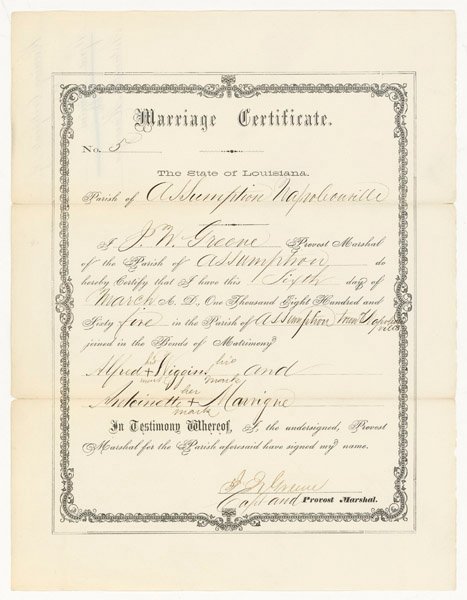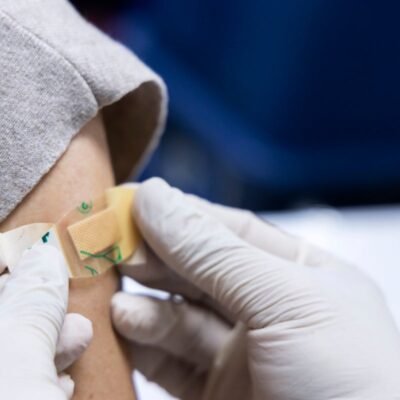To commemorate Black History Month, a special featured document display on Freedmen’s Bureau Marriage Records will be in the East Rotunda Gallery of the National Archives Building in Washington, DC, from February 4–March 3, 2025.
As the Civil War neared its end, Congress established the Bureau of Refugees, Freedmen, and Abandoned Lands inside the War Department. Popularly known as the Freedmen’s Bureau, it provided assistance to formerly enslaved people in the southern states and the District of Columbia to help them transition from slavery to freedom.

The Bureau supplied necessities such as food and clothing, operated hospitals and temporary camps, and witnessed labor contracts between freedmen and plantation owners or other employers. It also helped freedpeople establish schools, purchase land, locate family members, and preside over and document marriages between freed couples.
Unions between enslaved couples were not legally sanctioned or protected, and couples could be—and were—separated. After the 13th Amendment abolished slavery in 1865, states passed laws recognizing marriages of enslaved couples. With the help of Army chaplains and civil clergy, the Freedmen’s Bureau led the drive to legitimize these unions, issuing tens of thousands of marriage certificates during its seven year existence.
A sampling of these marriage certificates are currently on exhibit in the National Archives Building. One certificate on display is for Alfred Wiggins and Antoinette Marvigne from Napoleonville, Assumption Parish, Louisiana, who were among the first to be documented by the Freedmen’s Bureau. Their certificate is dated March 6, 1865, just three days after the Bureau was established by an act of Congress.

Funding limitations and deeply held racist attitudes forced the Freedmen’s Bureau to close in 1872.
The first Freedmen’s Bureau records came to the National Archives in 1939, and over the years, historians, social scientists, and genealogists have used these increasingly fragile records to document the Black experience in America. In the early 21st century the National Archives undertook a major project to preserve and increase the availability of these resources.
Today these records are a rich source of documentation of the social and economic experiences of formerly enslaved and recently freed Black Americans as well as the federal government’s policies toward them following the Civil War.
Visit the National Archives website to learn more about the records of the Freedmen’s Bureau.
A special thanks to National Archives curator, Alice Kamps, for providing information for this post.





